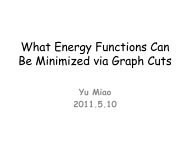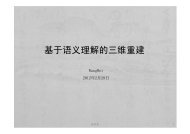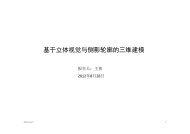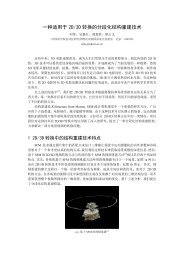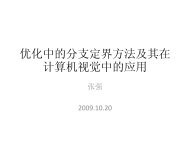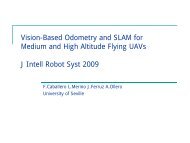Rotationally Invariant Descriptors using Intensity Order ... - IEEE Xplore
Rotationally Invariant Descriptors using Intensity Order ... - IEEE Xplore
Rotationally Invariant Descriptors using Intensity Order ... - IEEE Xplore
You also want an ePaper? Increase the reach of your titles
YUMPU automatically turns print PDFs into web optimized ePapers that Google loves.
This article has been accepted for publication in a future issue of this journal, but has not been fully edited. Content may change prior to final publication.<br />
<strong>IEEE</strong> TRANSACTION ON PATTERN ANALYSIS AND MACHINE INTELLIGENCE 16<br />
(a) (b) (c) (d) (e)<br />
Fig. 6. The selection of 4 support regions and their normalization. Each color corresponds to a boundary of one support region<br />
and all the support regions are normalized to a circular region with unified radius. (a) shows the selected support regions and<br />
(b)-(e) are the normalized regions.<br />
Fig. 7. The procedure of pooling local features based on their intensity orders for a support region. See text for details.<br />
paper, we set ri =1+0.5 × (i − 1) such that the support regions have an equal increment<br />
of radius as plotted in Fig. 6(a). In each support region, the rotation invariant local features of<br />
all the sample points are then pooled by their intensity orders. As shown in Fig. 7, first they<br />
are pooled together to form a vector in each partition which is obtained based on the intensity<br />
orders of sample points and then the accumulated vectors of different partitions are concatenated<br />
together to represent this support region. We denote it as D(R) =(F (R1),F(R2), ··· ,F(Rk))<br />
and F (Ri) is the accumulated vector of partition Ri, i.e.,<br />
F (Ri) = <br />
FG(X) (14)<br />
X∈Ri<br />
November 26, 2011 DRAFT



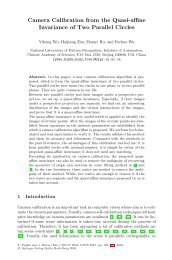
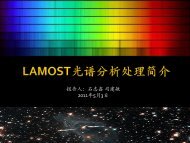
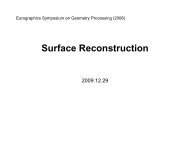
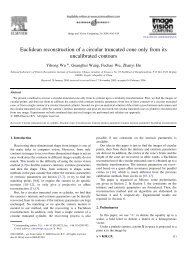
![Accurate, Dense, and Robust Multi-View Stereopsis (PMVS) [1,2,3]](https://img.yumpu.com/19388840/1/190x135/accurate-dense-and-robust-multi-view-stereopsis-pmvs-123.jpg?quality=85)


